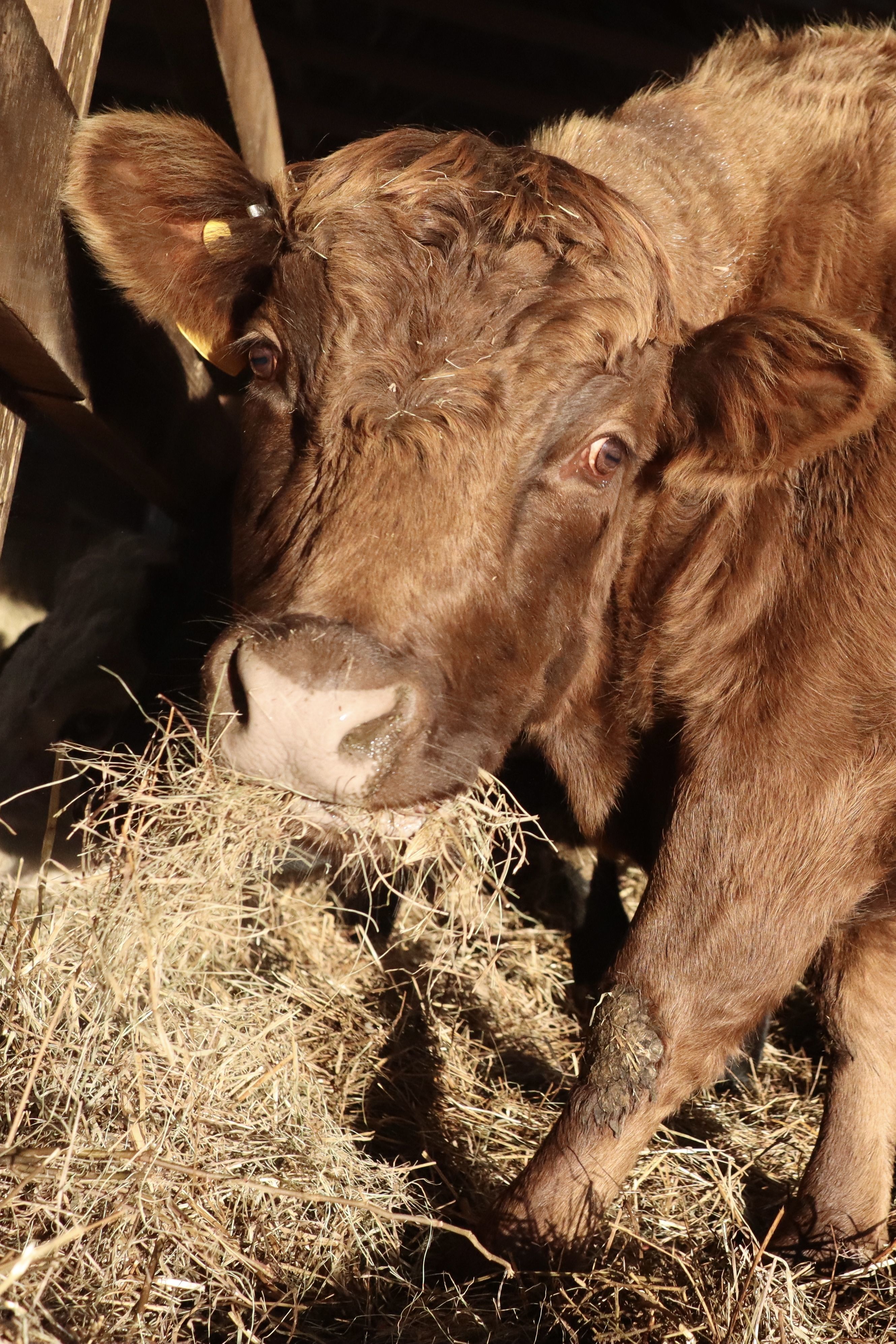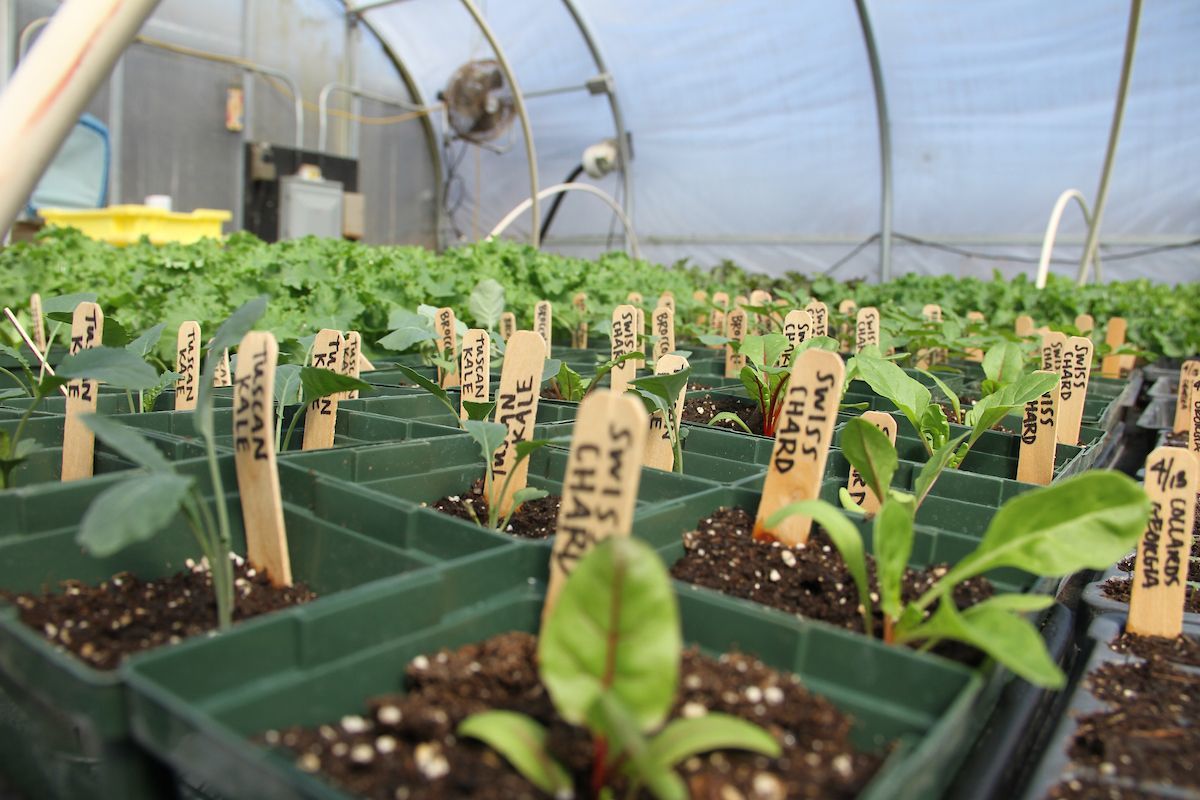
Notes from the Field: hay quality and ruminant nutrition
As the saying goes, “you are what you eat.” If you eat animal products, you eat the forage eaten by the animal, the soil, and the sun. This underscores the importance of the hay quality that we feed to our livestock. Forage (food for ruminants) is on my and most livestock farmers’ minds at all times. Last month’s piece about hay storage and handling gives a short history of hay production. This post dives into the nuances of hay and its nutritional value to ruminants.
It requires experience, intuition and observational skills to consistently make quality hay; nutritional value is dependent on the growth stage of forage, and when the forage is cut during its growth. The growth stages of grasses—the dominant forage component for haymaking and grazing purposes— are vegetative, boot (transition), and head (reproductive). The window to produce the best nutritional value for ruminants is between the booting and early heading stages. At this point, the ratio of protein, sugars, fiber and lipids is most ideal, which can be verified by a forage analysis test.
You may be familiar with the terminology “first cut hay,” “second cut hay,” and maybe you have even heard of “third cut hay.” This refers to the sequential number of times a particular hayfield was mowed and turned into hay bales during a particular growing season. Typically in the northeastern US, first cut is taken May-July, the second cut from July-September, and the third cut August-October. Most of the small hayfields we pass by in this region are only harvested once or twice in a season. The forage recovery time between cuts is highly dependent on weather, soil fertility and conditions, forage species and the goals of the farmer for that hayfield.
Historically, in the Northeast, the second cut (July-September) is easiest to make and the best quality because the weather is sunny and hot leading to a better chance of cutting at the ideal growth stage and a reduced chance of molding. The time of day and whether the sun shines— and therefore how much photosynthesizing by plants is accomplished—will also affect hay’s nutritional quality. In our humid region it takes three to five days of sunny and dry weather to attain adequate dryness for storage. Because seasonal weather patterns are less predictable in recent years making it challenging to produce hay on an expected schedule, haymakers can be more nimble about cutting forage intended to be fermented such as baleage. Fermented feed requires less drying time and so can be made during a window as short as one day.
Forage cut and harvested early in its growth stage contains higher protein content, lower fiber content, and higher fiber digestibility, but the hay yield will be low. Forage cut and harvested at a late stage (mature seed head and a lot of stem) will contain lower protein content, higher fiber content, and lower fiber digestibility. However, the volume will be higher. In the middling growth stages, the ratios are ideal for an animal's digestibility, rumen health, body maintenance and growth.
The targeted timing of forage harvest, by haymaking or grazing, keeps livestock healthy and ensures farmers can gain growth and added value from the animals. Ruminant nutrition is complex and dynamic; two critical nutritional factors are dry matter intake (DMI) and digestibility. Dry matter is the proportion of hay or fresh forage components that remain after water has been removed. The nutrients reside in the dry matter, and it is important that an animal’s DMI requirement is met to sustain itself, grow meat and wool, or produce milk. Livestock need to consume more fresh forage than hay to meet their required DMI (due to the fact that there is much more water in fresh growing forage). The digestible parts of hay and fresh forage are crude protein, water-soluble carbohydrates and neutral detergent fiber (NDF). The less digestible parts of the plant (cellulose and lignin, which contains acid detergent fiber or ADF) are still important because they support rumen biological activity.
The ratio of protein, soluble sugars, fiber and lipids is important to ensure adequate digestion and health of the rumen biome. The fats found in forage are polyunsaturated fatty acids (PUFA), including Omega 3 and Omega 9. PUFA is important for overall animal function and growth. Data suggests that high PUFA diets result in fewer methane emissions from ruminants.
In this post, we have only scratched the surface of forage quality and components of ruminant nutrition. Ensuring quality food for our livestock is foundational for our own health and for sustainable farm business models. The practical work of livestock farming requires farmers to balance art and science, preparing for the expected and unexpected.
Unlinked References:
Germinal. (2022, January 16). The Nutritional Value of Grass Guide. https://germinal.co.uk/knowledge-hub/the-nutritional-value-of-grass/
Oregon State University Extension Service. (2022, January 16). How to starve Animals with a Full Stomach. https://extension.oregonstate.edu/node/101166/printable/print

